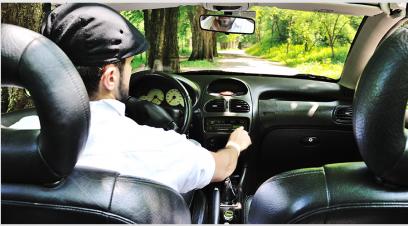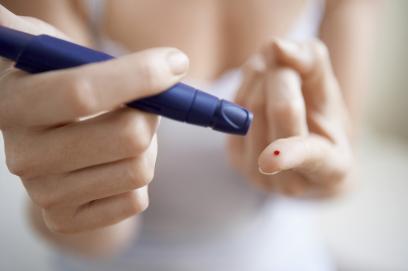
Sugar friends can drive? These preparations can be done well in advance
Insulin pump life
Can diabetics drive? Because there is no domestic regulation that patients with diabetes can't get a driver's license, legally, diabetics can drive. However, some countries in the West have clear regulations. Diabetes patients treated with insulin cannot obtain an interstate highway driver's license (equivalent to a professional long-distance driver in China). Why is this so stipulated?In general, sugar friends have certain risks in driving, and accidents are more likely to occur than normal people. Thoughts must be highly concentrated when driving, and consume a lot of energy and physical strength. If you can't eat on time, blood sugar fluctuates, and it is prone to dizziness, weakness, hand shaking, cold sweat and other symptoms leading to traffic accidents. Most people with diabetes can drive, especially young, short-term, stable blood sugar, and fewer complications. However, one of the following situations needs to be cautious.1. Blood sugar has not been controlled stably and has acute complications;2. There are complications in the lower limbs;3. Injecting a larger dose of insulin causes a large fluctuation in blood sugar;4. "Old sickness" with a history of more than 5 years;5, there are more serious chronic complications, such as retinopathy or cataract vision loss, renal insufficiency, diabetic foot, stroke and so on. For the sugar friends who want to go on the road, here are some suggestions:● Do not delay or forget to eat.● Take a proper rest during long trips.● If your blood sugar is already below 4mmol/l, don't drive until you treat hypoglycemia and your blood sugar is under control!● Guaranteed on-time meals while driving, do not estimate road conditions by experience● Test blood sugar before driving, get off every 1~2 hours on the way, add meals if necessary, check every two hours when traveling long distances. When you have hypoglycemia while driving, you should:● Stop the fire, if there is a second person in the car who can drive, consciously give the key to him.● Eat carbohydrates that can quickly glyceose, such as glucose tablets, sugary drinks (such as cola, Yakult)● After your blood sugar level returns to your desired range, choose a food that has been used for a long time (ie, foods that are slow in sugar, protein and fat, such as milk, chocolate, energy bars), and wait for 45 minutes before driving. You need to give yourself some time to refocus.If your hypoglycemia is high and you are struggling to deal with low blood sugar, you should tell your doctor and ask if you can drive. Once you lose consciousness because of low blood sugar, it will be very dangerous!Long-term glycemic control is very important, which requires regular life, regular meals, regular monitoring of blood glucose and related complications such as retinopathy, neuropathy, and cardiovascular disease.First-time drivers should first consult a diabetes specialist to assess whether it is suitable for driving and what should be noted. Long-term drivers should conduct a comprehensive inspection and evaluation at least annually.

Strengthen blood sugar monitoring to avoid "light enemy"
Insulin pump life
Diabetes is divided into type 1, type 2 and gestational diabetes. No matter which one is obtained, it is inseparable from the monitoring of blood sugar, because this is the most basic reference for doctors to develop treatment plans and understand the condition control. Within the scope of this is the key to delaying the progression of diabetes and complications.Type 1 diabetes accounts for about 10% of the total number of diabetes. It occurs in children and adolescents. The age of onset is usually less than 30 years old. It is usually more urgent, and the symptoms such as polyphagia, polyuria, polydipsia, and weight loss are more obvious. Often, the function of islets is poor, and lifelong insulin injections are needed to maintain survival. Therefore, in order to control diabetes that requires lifelong treatment, you need to pay attention to details in your life.Because type 1 diabetes patients have poor islet function, they need to be treated with extraneous insulin. Ideal insulin therapy should be closer to physiological treatment. Insulin in different classes of action can be used to supplement both basal and postprandial insulin for more effective control of whole-day blood glucose. At present, the best intensive treatment in the clinic is the insulin pump. Compared with the common insulin treatment, the insulin pump treatment has a better blood sugar control effect, and the blood sugar regulation is more flexible. Patients treated with insulin should monitor their blood glucose at least 5 times a day at the beginning of treatment. After reaching the treatment target, blood glucose can be monitored 2 to 4 times a day. If oral hypoglycemic agents are used and/or lifestyle interventions, blood glucose control is up to standard. After monitoring blood glucose 2 to 4 times a week. It can be said that the quality of type 1 diabetes control depends to a large extent on whether the patient has the habit of self-testing blood sugar. Only patients who have self-tested blood glucose several times a day are qualified to be responsible for their own sugar. Friends." At present, diabetes is incurable. What we can do is to control the disease and delay the occurrence and progress of complications. Therefore, it is very important to strengthen daily monitoring and develop good recording habits. It is very important for the control of the disease and the adjustment of treatment plans. . Self-monitoring items: blood glucose (fasting blood glucose, 2 hours postprandial blood glucose); weight; blood pressure. Time and control criteria for blood glucose monitoring IDF-WPR 2002 standardControl standardBlood sugar mmol/LWell controlledgeneralbadFasting4.4-6.1≤7.0>7.02 hours after a meal4.4-8.0≤10.0>10.0 In the process of monitoring blood sugar, sugar friends should avoid the phenomenon of “light enemy” and “fear of trouble”. Some patients have no feeling when their blood sugar is slightly high. They think that it is not necessary to measure the blood pressure. This kind of behavior of ignoring slightly high blood sugar is easy to cause chronic complications. It is too late for patients to have blood sugar after symptoms. Some patients are afraid The trouble is that it doesn't matter if you measure blood glucose a few times. It is not enough to measure it once a few months. This is not enough, because blood sugar can be affected by diet, activity, drugs, emotions, etc. If blood sugar is in disorder for a long time. The measures taken to control sugar are very blind, and the consequences of hyperglycemia or hypoglycemia are unimaginable; especially for patients treated with insulin, in order to observe the appropriate dose and avoid hypoglycemia, the number of measurements should be more. In short, people with diabetes should develop the habit of self-monitoring blood glucose, which is beneficial to the prevention and treatment of diabetes.

Is Apple's sugar content high? Is the sugar friend suitable for eating apples?
Insulin pump life
We all know that diabetes is a disease that requires strict control of blood sugar. The more influence a certain diet has on blood sugar, the less suitable it is for sugar friends; on the contrary, those who have little effect on blood sugar can eat with confidence. So, can sugar friends eat apples? Today we will take a look at this issue. To determine the effect of food on blood sugar, mainly depends on three indicators of food: glycemic index, sugar content and blood sugar load. So what about Apple’s data? Learn about Apple's ability to rise sugar: its glycemic index GI is 36, sugar content is about 12%, and sugar load GL is about 4.4, which means that apples are low GI foods and low GL foods. From these three data, apples have less effect on blood sugar, so diabetics can eat apples. But still the old saying, sugar friends can eat anything, nothing can not eat. Once any food is eaten too much, the sugar-reducing food will turn into sugar, so sugar users need to pay attention to the amount of apples.The benefits of sugar friends eating apples1, lose weightFor the more obese sugar friends. Apple contains pectin, pectin can produce satiety, delay gastric emptying, slow down intestinal transport, affect the mixing of food and digestive enzymes, hinder the formation of micro-micelles, resulting in a decrease in the dispersion of nutrients on the surface of intestinal mucosa. Thereby affecting the digestion and absorption of carbohydrates and fats. Achieve weight loss. 2, regulate blood sugar Apple is rich in dietary fiber, vitamin C, polyphenols, and flavonoids, which helps regulate blood sugar and cholesterol, protect the heart, and prevent coronary heart disease. The chromium rich in apples can increase the sensitivity of insulin and help lower blood sugar. Apple also contains acid substances such as malic acid, which is also very helpful for the regulation of blood sugar. 3. Improve insulin sensitivityThe gelatin and vector element chromium in apples keep blood sugar stable and increase insulin sensitivity. Although the benefits of eating apples are many, but sugar friends should also pay attention to it, the daily consumption of apples is best controlled within 200 grams, probably the size of a fist. For those with unstable blood sugar, it is best to eat only half an apple at a time. Apple is a good choice for eating food. Try to avoid peeling when eating apples, because most of the vitamins and pectin in apples are in the skin and near skin. . Sugar friends eat apples and drink apple juice are two different concepts, do not confuse, because apple juice will lose some of the dietary fiber and vitamin C, easier to digest and absorb, in fact, the rate of glycemic will become faster. So sugar friends are good for apples, not apple juice.


